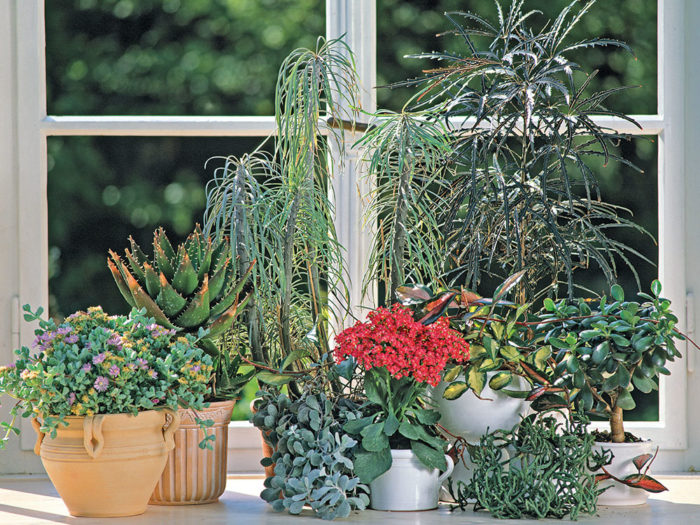
You want to bring your succulents indoors, and who can blame you? Succulents are refreshingly offbeat, bordering on freaky in their physical appearance. Envision the botanical version of a rhinoceros, and that’s not far off. Common names such as drunkard’s dream, flapjacks, devil’s backbone, donkey tails, and jelly beans give you some idea of the traits that set this clan apart. They can have swollen leaves and stems as well as strange leaf shapes. Flowers are often a bonus feature. Even better, blossoms often occur in midwinter, just when you need them most. In other words, succulents are sufficiently striking to make houseplant hosting worthwhile.
Succulents lend themselves to the windowsills of less-than-doting gardeners. Even if you verge on neglectful and tend to be a houseplant serial killer, succulents are a good place to start. Basically, you want to take everything you know about growing these weird beasties outdoors and plug it in on a windowsill level. Outdoors they withstand beating sun. How does that translate indoors? Bright light is a requisite. If you don’t have a fairly bright destination for your succulent, read no further. Besides that main requirement, they are low maintenance, leaving you plenty of time for outdoor pursuits.
| Tip: Going outdoors
A note of caution: Although succulents love living near a window where sunlight streams in, if you send them outside for a summer vacation, be sure to increase light gradually to prevent sunburn. |
How to host a succulent
There’s no secret about it: succulents want ample light. How does that translate into your reality? An unobstructed south-facing window is ideal, but a bright east- or west-facing exposure usually does the job too. If you only have north-facing windows or live in the woods, sorry.
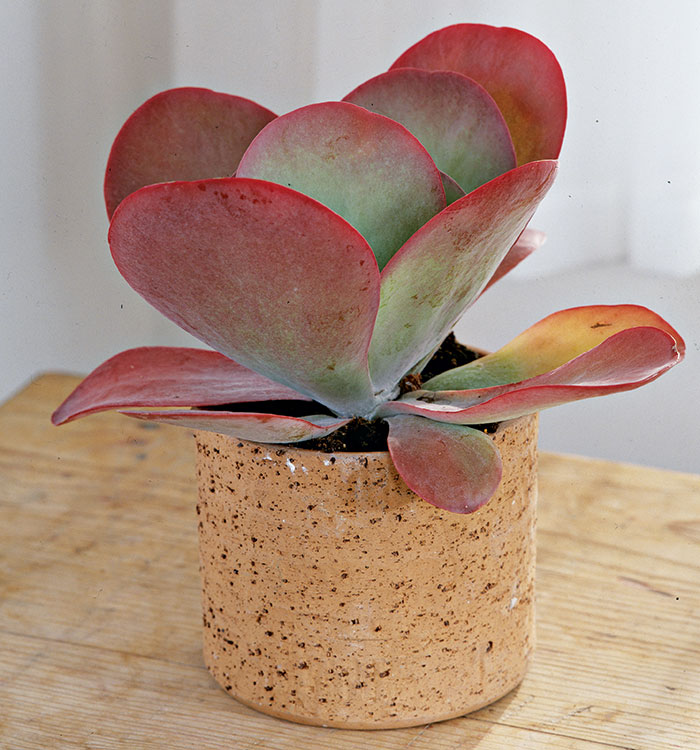
But beyond the sun-worshipping trait, succulents are flexible. In fact, they are downright undemanding, making them a good place to start. Say you tend to be distracted—by the garden, your partner, extracurricular activities, whatever—a succulent isn’t going to hold that against you. Hailing from parts of the world where precipitation is scant, those plump leaves you admire for their quirkiness serve as water-storage units. What does that mean to you? They aren’t going to faint if you forget to water. In fact, succulents detest soggy roots and should be watered only when the soil is dry (but not parched). If you’re the ultra-nurturing type of person who hovers over a plant with a hose, maybe this relationship isn’t going to work out.
Succulents tend to be fuss-free. Pruning and grooming aren’t big issues for these compact, slow-growing plants. If they begin to stretch, insufficient light or too much food is usually the culprit. In particular, echeverias often hold their rosettes on denuded stems with age. If you don’t like that look, simply snip off the rosette with a couple of inches of stem, and stick it into the soil. Eventually it will form roots. It’s as simple as that.
In fact, the whole experience is a breeze with succulents. And they’re readily available. Although they look like specialty plants, succulents are often seen in the floral department at the supermarket. Once you get your mojo, a collecting spree might be the outcome. And for very little effort, you get bragging rights. Windowsill wary? This is a good place to start.
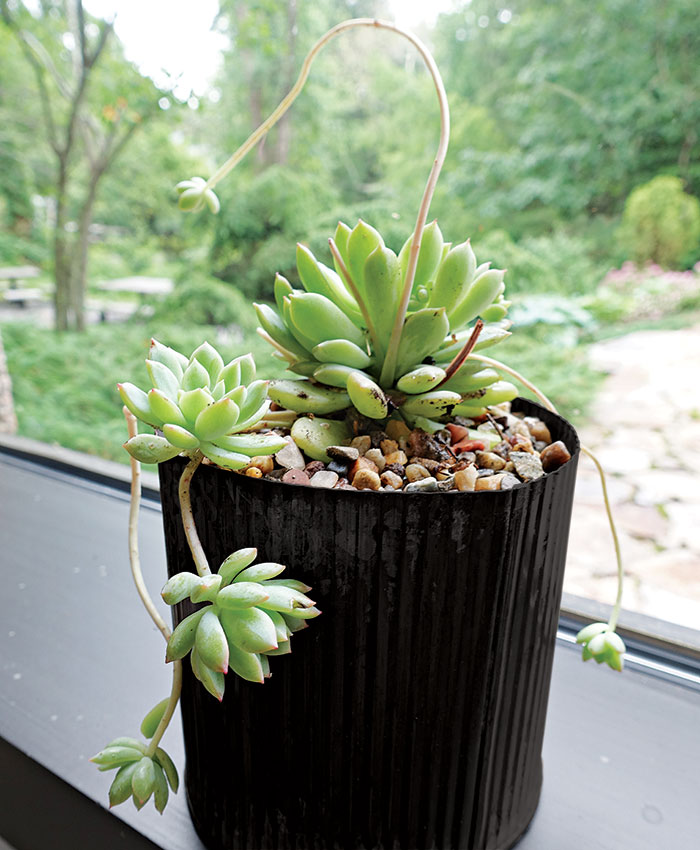
Most succulents do not demand a diet heavy in fertilizer. The breakfast of champions is going to lead to stretchy, flabby growth rather than the toney muscular lines you love. Feed once a month in summer if it makes you happy (although it’s usually not necessary). In winter, be stingy. Withhold fertilizer until days lengthen and light levels increase in spring.
In the temperature department, succulents are adaptable. If you turn up the thermostat in winter, succulents are going to be just fine with the low humidity and dry atmosphere. A chilly, drafty house is also OK—as long as it’s not damp. By extension, the bathroom might not be the best place to stash your succulents.
If you’re a beginner, you might veer toward Echeveria, Kalanchoe, Schlumbergera (aka Christmas and Thanksgiving cacti), Crassula, Aloe, and Haworthia. All these genuses have members that make low-maintenance houseplants.
But not all succulents are a cinch. More challenging might be super sun-worshipping Aeonium, many Euphorbia species (although the crown of thorns is easy to host), and true cacti (you know—the ones with all the hair and thorns, such as Cephalocereus and anything else with “cereus” in its name). The average home is not going to meet their need for sun.
Let the water flow
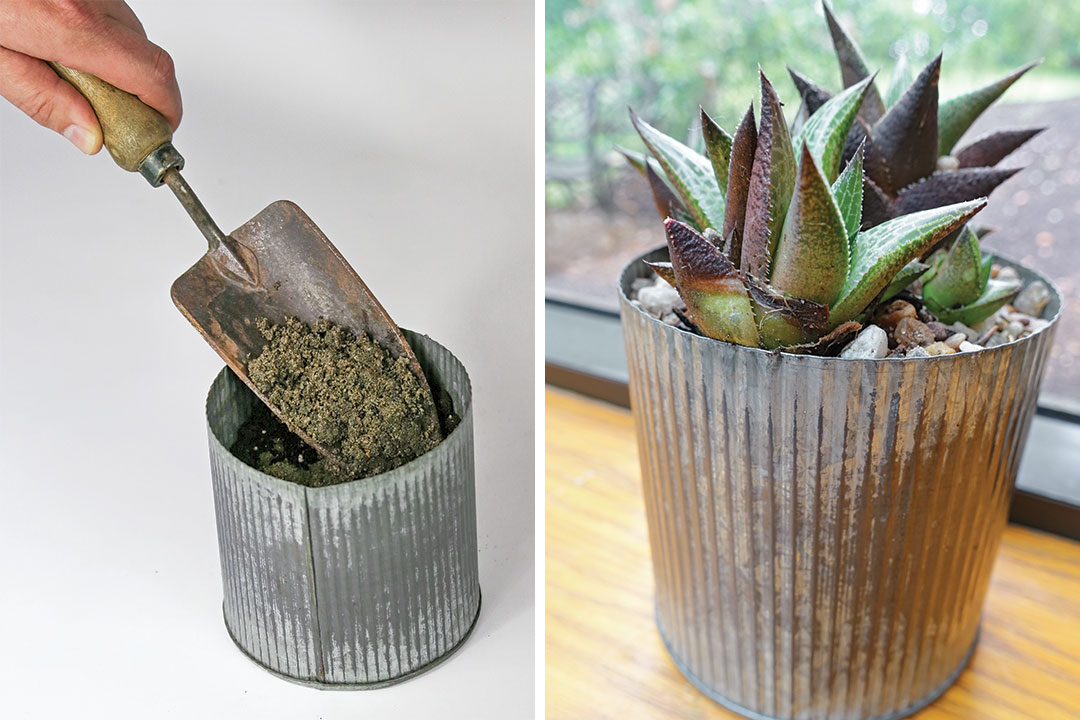
Succulents like good drainage. Be sure your container has a drainage hole, and use a potting medium that keeps moisture moving; very peaty soils might need additional sand. Offer graduations in pot size slowly. Succulents don’t mind being pot-bound, and they often react negatively (understatement alert) when swimming in an oversize container because surplus soil without roots tends to remain soggy. Not good.
Tovah Martin is the author of several books on houseplants, including The Unexpected Houseplant: 220 Extraordinary Choices for Every Spot in Your Home.




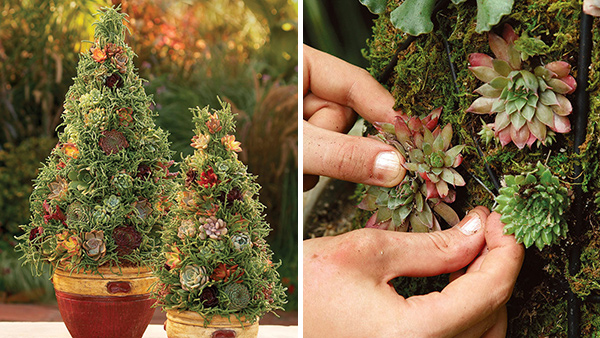












Comments
Log in or create an account to post a comment.
Sign up Log in